I have an Angular app running which uses an external api to get countries ISOs. This API uses https and it's giving me an error.
The thing is: when I use a proxy in my angular local environment, mapping /iso-api/ to the real url it works ok.
"/iso-api/*": {
"target": "https://www...",
"pathRewrite": { "^/iso-api": "" },
"secure": false,
"changeOrigin": true,
"logLevel": "debug"
}
But I want this to work in production, so I want to use the real url.
In my server I am returning the Access-Control-Allow-Origin: * header already.
I've tried to run the angular server with ssl (as the external api uses https), but I receive the same error.
I know a solution would be to implement the proxy in the server, but I believe this should not be done and there may be a way to retrieve this data from the frontend. Help please.
Response
This is the network error in Chrome:

In Firefox, the request ends with 200 OK and returns data, but CORS error is thrown and I cannot access the data from the app: CORS header 'Access-Control-Allow-Origin' missing
General
Request URL: https://www...
Referrer Policy: no-referrer-when-downgrade
Request headers
:method: GET
:scheme: https
accept: application/json, text/plain, */*
accept-encoding: gzip, deflate, br
accept-language: es-ES,es;q=0.9,en;q=0.8
origin: http://localhost:4200
referer: http://localhost:4200/app/login
sec-fetch-dest: empty
sec-fetch-mode: cors
sec-fetch-site: cross-site
Response headers
accept-ranges: bytes
cache-control: max-age=0
content-encoding: gzip
content-language: en-US
content-length: 68356
content-type: application/json
date: Mon, 27 Apr 2020 14:49:30 GMT
expires: Mon, 27 Apr 2020 14:49:30 GMT
referrer-policy: strict-origin-when-cross-origin
server-timing: cdn-cache; desc=HIT
server-timing: edge; dur=1
server-timing: ACTT;dur=0,ACRTT;dur=88
set-cookie: ... expires=Mon, 27 Apr 2020 16:49:30 GMT; max-age=7200; path=/; domain=...; HttpOnly
set-cookie: ... Domain=...; Path=/; Expires=Mon, 27 Apr 2020 18:49:30 GMT; Max-Age=14400; HttpOnly
set-cookie: ... Domain=...; Path=/; Expires=Tue, 27 Apr 2021 14:49:30 GMT; Max-Age=31536000; Secure
status: 200
vary: Accept-Encoding
UPDATE
Angular service code
import { HttpClient } from '@angular/common/http';
...
constructor(
private _http: HttpClient,
private _errorUtil: ErrorUtilService,
private _converter: StoreConverter
) {}
...
getCountries(): Observable<CountryWithLanguages[]> {
return this._http.get<GetStoresResponse>(API.storeUrl).pipe(
catchError(this._errorUtil.handle),
map(result => result.stores),
switchMap(stores => stores),
filter(this._isActiveStore),
map(store => this._converter.toView(store)),
toArray()
);
}
To serve the app I use angular dev server, I do not add the 'Access-Control-Allow-Origin' header manually but, in the browser, I see that it is being added.
angular.json
"serve": {
"builder": "@angular-devkit/build-angular:dev-server",
"options": {
"browserTarget": "push-web-app:build",
"proxyConfig": "src/proxy-local.conf.json"
},
}
